A Photo Of Saturn. Took By Cassini With COISS On September 01, 2004 At 08:15:35. Detail Page On OPUS

A photo of Saturn. Took by Cassini with COISS on September 01, 2004 at 08:15:35. Detail page on OPUS database.
More Posts from Space-m17-blog and Others
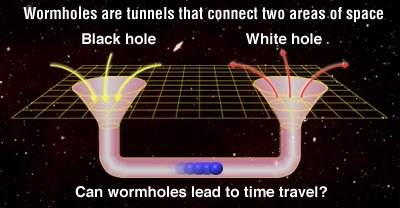
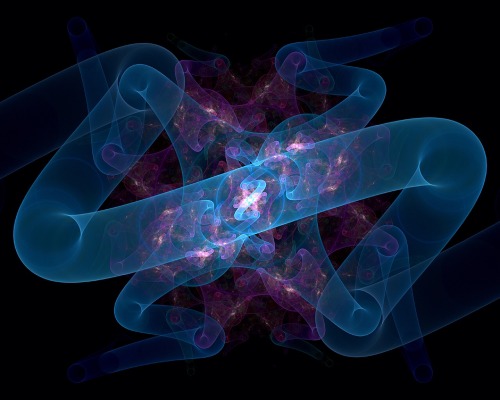
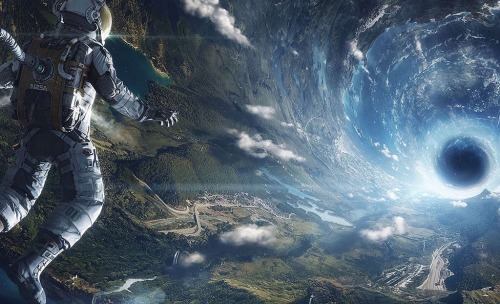
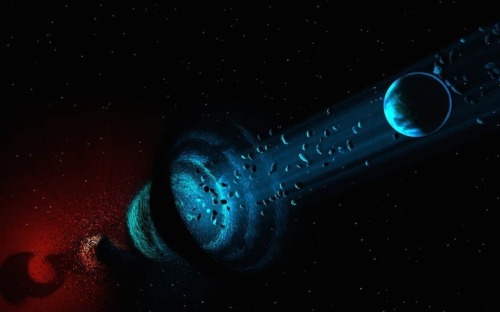
Wormholes
Also known as Einstein-Rosen Bridges are theoretically possible going by Einstein’s theory, and equations of general relativity. Basically wormholes take advantage of our 3 dimensional space and are able to “bend” it. Picture a sheet of paper; now put two circular holes on each end of that sheet of paper. Normally the quickest way to join one point to the other would be to draw a straight line between them. Now instead, you could fold the piece of paper so each hole is touching meaning that there is no longer any distance between them. This is an analogy of how a wormhole works except instead of a circular hole on a 2D plane, the entry and exit points of an Einstein-Rosen bridge can be visualised as spheres in a 3D space.
While the theory of general relativity allows the existence of wormholes, we have not yet found physical evidence. The first wormhole solution discovered was the Schwarzschild wormhole presented in the Schwarzschild metric describing an eternal black hole. However this is not stable enough and would collapse before anything could cross from one end to the other. Traversable wormholes could exist of there was a form of exotic matter with a negative energy to stabilise them.
The Casmir effect shows that quantum field theory allows the energy density in some space to be relatively lower than the ordinary vacuum of space. A lot of physicists (like Stephen Hawking) use this to argue that it is possible to stabilise a traversable wormhole. However there are no known natural processes that would cause a traversable wormhole to stabilise.
The quantum foam hypothesis can be used to suggest the spontaneous appearance of tiny black holes at the Planck scale. Stable versions of these tiny wormholes have been suggested as dark matter candidates. It is also possible that one of these wormholes opened into a previously empty space from another universe, held open by a cosmic string (1D string) with a negative mass then it could be inflated to a macroscopic size by cosmic inflation. Is it possible this happened at the start of the Big Bang?
Give support to this project






Full project here: https://www.behance.net/louisdazy
Ever wonder about what lies between the stars? Learn all about the interstellar medium in this short video! Follow Evant Horizon for more astronomy posts!
The interstellar medium is the gas and dust between stars. Of its mass, this gas is composed of mainly hydrogen and helium with a touch of heavier elements. Highly dense regions of the ISM known as molecular clouds are directly responsible for the formation of stars.
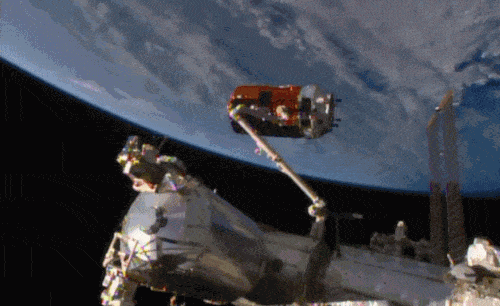
Aboard the International Space Station this morning, Astronaut Kimiya Yui of the Japan Aerospace Exploration Agency (JAXA) successfully captured JAXA’s Kounotori 5 H-II Transfer Vehicle (HTV-5) at 6:28 a.m. EDT.
Yui commanded the station’s robotic arm, Canadarm2, to reach out and grapple the HTV-5, while NASA astronauts Kjell Lindgren provided assistance and Scott Kelly monitored HTV-5 systems. The HTV-5 launched aboard an H-IIB rocket at 7:50 a.m. Wednesday, Aug. 19, from the Tanegashima Space Center in southern Japan. Since then, the spacecraft has performed a series of engine burns to fine-tune its course for arrival at the station.
The HTV-5 is delivering more than 8,000 pounds of equipment, supplies and experiments in a pressurized cargo compartment. The unpressurized compartment will deliver the 1,400-pound CALorimetric Electron Telescope (CALET) investigation, an astrophysics mission that will search for signatures of dark matter and provide the highest energy direct measurements of the cosmic ray electron spectrum.
Below is a breathtaking image shared by Astronaut Scott Kelly of the HTV-5 and Canadarm2, which reached out and grappled the cargo spacecraft.

Hot & Steamy RS-25 Engine Test

Today, we tested the RS-25 engine at Stennis Space Center in Mississippi, and boy was it hot! Besides the fact that it was a hot day, the 6,000 degree operating temperature of the hot fire test didn’t help things. This engine is one of four that will power the core stage of our Space Launch System (SLS) into deep space and to Mars. Today’s test reached 109% power and burned 150,000 gallons of liquid oxygen and 60,000 gallons of liquid hydrogen. When SLS launches with all 4 of its engines, it will be the most powerful rocket in the world!

This engine was previously used to to fly dozens of successful missions on the space shuttle, so you might be asking, “Why are we spending time testing it again if we already know it’s awesome?” Well, it’s actually really important that we test them specifically for use with SLS for a number of reasons, including the fact that we will be operating at 109% power, vs. the 104% power previously used.

If you missed the 535-second, ground rumbling test today – you’re in luck. We’ve compiled all the cool stuff (fire, steam & loud noises) into a recap video. Check it out here:
Hello! I'm a person, and I find physics (specifically astrophysics) to be incredibly interesting, and I'd like to know more about it. Have any idea on what I should read/watch to get more educated on the subject? I don't know where to start ^^".
Well I get a lot of my updates in the science world from here, http://www.sciencedaily.com/news/space_time/astrophysics/ just look under the astrophysics section then when you get to understand some of the key concepts the look up papers on science direct and google scholar for the best free papers :)







Illustration by Jean Luc Beghin for the 1970 edition of Spirou.
The top-right text says the image doesn’t depict any particular moment during the Apollo missions but that the two astronauts were picked arbitrarily: Frank Borman, commander of Apollo VIII (the first mission to fly around the moon) and Neil Armstrong, commander of Apollo XI (and the first person to walk on the moon).
I cleaned this image up a bit and the source-file can be found here, as well as other high definition scientific illustrations.

The International Space Station above the spinning Earth.
Photo credit: NASA
-
 sura-changlor reblogged this · 9 years ago
sura-changlor reblogged this · 9 years ago -
 mamasmax14 liked this · 9 years ago
mamasmax14 liked this · 9 years ago -
 space-m17-blog reblogged this · 9 years ago
space-m17-blog reblogged this · 9 years ago -
 paradoxfox-blog liked this · 9 years ago
paradoxfox-blog liked this · 9 years ago -
 latomorum reblogged this · 9 years ago
latomorum reblogged this · 9 years ago -
 mari-182 reblogged this · 9 years ago
mari-182 reblogged this · 9 years ago -
 jimthepunkrockfan reblogged this · 9 years ago
jimthepunkrockfan reblogged this · 9 years ago -
 swallowmyhate reblogged this · 9 years ago
swallowmyhate reblogged this · 9 years ago -
 ikuranas liked this · 9 years ago
ikuranas liked this · 9 years ago -
 londonjim liked this · 9 years ago
londonjim liked this · 9 years ago -
 alphabetcoup reblogged this · 9 years ago
alphabetcoup reblogged this · 9 years ago -
 thedemoncloset reblogged this · 9 years ago
thedemoncloset reblogged this · 9 years ago -
 domingocorrales-blog liked this · 9 years ago
domingocorrales-blog liked this · 9 years ago -
 thedemoncloset liked this · 9 years ago
thedemoncloset liked this · 9 years ago -
 halalheroin reblogged this · 9 years ago
halalheroin reblogged this · 9 years ago -
 celestial-soup reblogged this · 9 years ago
celestial-soup reblogged this · 9 years ago -
 martianhippy reblogged this · 9 years ago
martianhippy reblogged this · 9 years ago -
 a-very-honoured-moose liked this · 9 years ago
a-very-honoured-moose liked this · 9 years ago -
 esporamistica liked this · 9 years ago
esporamistica liked this · 9 years ago -
 e-dubbel reblogged this · 9 years ago
e-dubbel reblogged this · 9 years ago -
 smallshyducky reblogged this · 9 years ago
smallshyducky reblogged this · 9 years ago -
 veryjerryexperience liked this · 9 years ago
veryjerryexperience liked this · 9 years ago -
 starhasarrived reblogged this · 9 years ago
starhasarrived reblogged this · 9 years ago -
 starhasarrived liked this · 9 years ago
starhasarrived liked this · 9 years ago -
 unknownstain reblogged this · 9 years ago
unknownstain reblogged this · 9 years ago -
 lilbittypenguin reblogged this · 9 years ago
lilbittypenguin reblogged this · 9 years ago -
 thelovingreaper liked this · 9 years ago
thelovingreaper liked this · 9 years ago -
 sega182 reblogged this · 9 years ago
sega182 reblogged this · 9 years ago -
 micheletassinari liked this · 9 years ago
micheletassinari liked this · 9 years ago
I love space. I've been to space camp in Huntsville Alabama and I am planning on going every summer. I look forward to be an astronaut for nasa on the sls that is planned to be launched 2018. And the manned mission 2030. So yeah I won't let anything get in my way.
138 posts